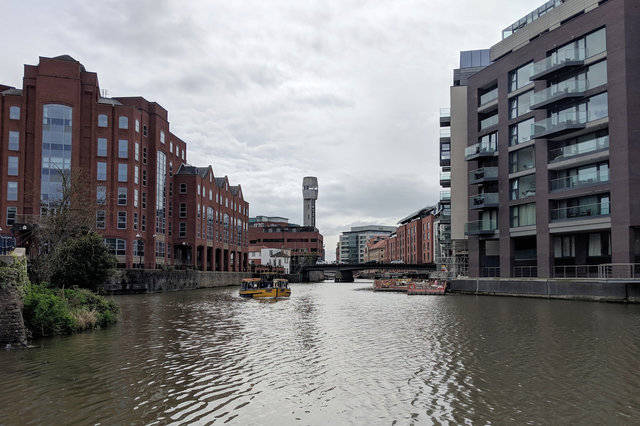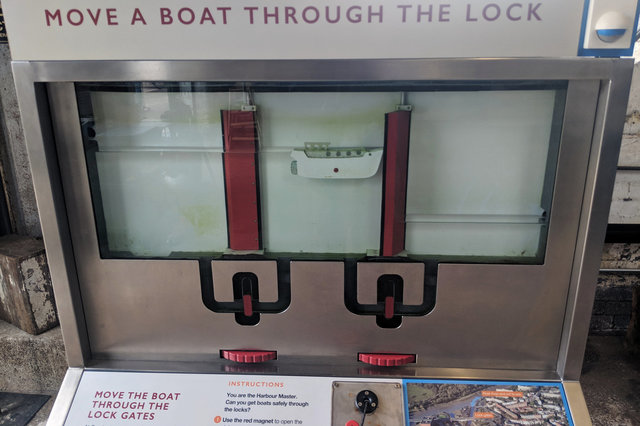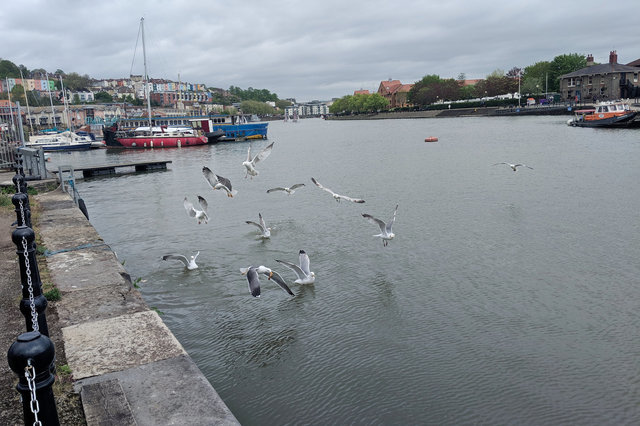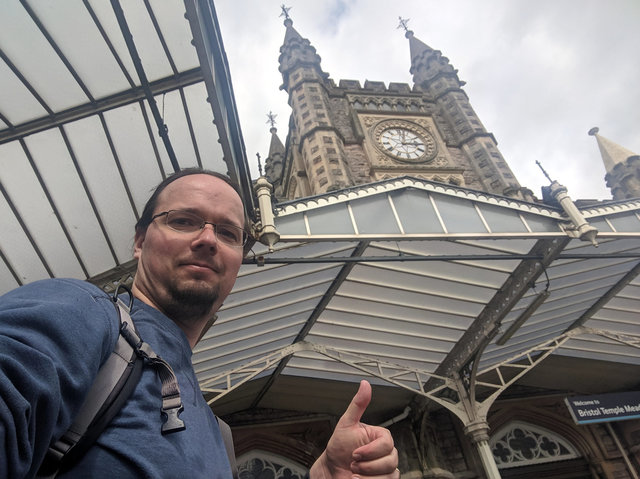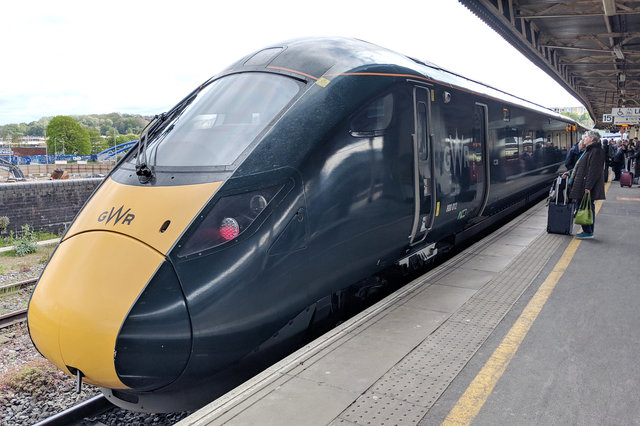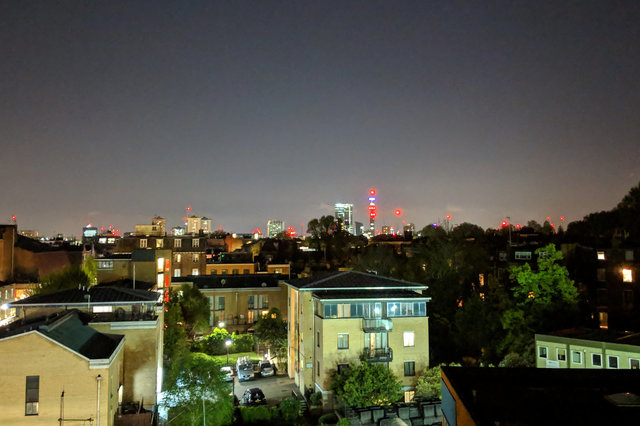Underfall
Started: 2019-05-18 17:59:26
Submitted: 2019-05-18 20:39:33
Visibility: World-readable
28th April 2019: In which the intrepid narrator visits the end of Bristol's Floating Harbour and gets delayed on the train to London
My travel schedule gave me only one night in Bristol, which was just enough to see the things I absolutely wanted to see (mostly SS Great Britain) but left me with only a brief impression of the city itself.
My first order of business for my second day in Bristol was to buy a battery charger for my Nikon camera. I ended up on the plane without a charger, and with only 20% of my camera's battery remaining, I wasn't confident I'd be able to complete the trip without a charger. (I was reminded of the cautionary tale of my first trip to London as a tourist, in which I neglected to bring my charger (on the incorrect belief that my charger was not dual-voltage and couldn't handle the UK's wall power), which meant my photos from the trip ran out a couple of days before I left.)
I headed to the one camera shop in Bristol that was open on Sunday morning, on the other side of an open-air shopping arcade on the north side of the Floating Harbour, and bought a universal camera battery charger (because they were stocked out of the specific charger I needed for my battery). This featured an elaborate mechanism to position the pins on the charger in just the right position to line up with the terminals on the battery; which was somewhat more complicated than I really wanted, but was good enough for my purposes.
I headed back to the harbour, through Castle Park (with some old fortifications from the city of Bristol) to catch to catch a ferry running along the harbour. (The harbour occupies the original channel of the River Avon, at a point where the channel looks just like a regular river and not like any harbour I'm familiar with.)
The ferry I caught featured local celebrity Gromit, the clay-animated dog, as its figurehead, courtesy of the local animation shop Aardman Animations.
The ferry carried me down the harbour to the city centre, passing under a low bridge where the pilot's cabin dropped eighteen inches to give enough clearance to pass under the bridge, then elevated again once it was clear of the bridge. I disembarked at SS Great Britain, then walked back to M-Shed, a museum highlighting Bristol's history in an old dockside warehouse. (I am given to understand that there were once warehouses living the harbour identified by monotonically-increasing alphabetic letters.)
The museum had several galleries with artifacts from recent history, mostly centered on Bristol's importance as an imperial trading port, plus the impact of bombings during World War II. One gallery had a wall of artifacts from various protests in Bristol, including the local outpost of Occupy Wall Street (whose message in Bristol seemed roughly as incoherent as its message elsewhere).
After I finished looking through M-Shed, I walked along the tidal River Avon, now flowing in a new bypass channel built to let the Floating Harbour maintain a constant depth, to the Underfall Yard. The Underfall Yard holds the sluice gates that maintain the water level in the harbour, as well as other maintenance operations for the harbor and ship-building and repair works.
The pump room held the Victorian pumps that powered the hydraulically-operated bridges and locks around the harbour, later upgraded to electric power (and fitted with modern safety cages to keep delicate fingers away from the exposed pinch points on the machinery).
The yard's visitor's center had a number of interactive exhibits showing the extent of the harbour and the Victorian engineering works that had been undertaken to convert the tidal River Avon into a controlled harbour with a constant water level. (I was amused to learn that there are locks at the far end of the harbour that are occasionally closed to keep the water level in the harbour lower than the river, on annual high tides.) I especially enjoyed the interactive display showing how a boat moves through locks with real water -- which seemed like a step up from the electronic display showing the same thing at the locks in Seattle (though it was a little fiddly and required some careful attention to get the locks to work right).
I ate lunch at the yard's cafe, then walked to the end of the harbour, past the Cumberland Basin at the mouth of the harbour, under a large swing bridge carrying four lanes of traffic bypassing central Bristol, to the lock maintaining the water level at the mouth of the harbour.
The tide was low, exposing the muddy banks of the River Avon, and the mud that had filled in the approaches to the two older locks south of the main lock now in use.
I backtracked to look at the hulk of an old swing bridge, built by IK Brunel to bridge the locks, now quietly rusting away by itself perched on the pavement next to the lock, with a sign pointing to the historical association's website trying to raise money to preserve and retrofit the bridge.
I walked around the old locks to a view point jutting out into the River Avon with a commanding view of the Clifton Suspension Bridge above the Avon Gorge.
I posted on Twitter a reference to the Hark, a vagrant! strip "The greatest engineer in the world":
Did somebody say "bridge" and then shortly thereafter say "impossible"?
With that I headed back through Bristol to catch a return train to London. I timed my return wrong to catch a ferry back; it ended up being faster to walk the two miles back to my hotel than wait for the next ferry. I walked along the north side of the harbour, crossing Pero's Bridge (a pedestrian draw bridge powered by a hydraulic cylinder visible from the ferry), then picked up my bags at my hotel, and took the shortcut the hotel clerk recommended to the back entrance at Bristol Temple Meads Station, skipping the road construction and pedestrian diversions at the front of the station. (I did step out onto the front of the station, where taxis and buses vied for their positions on the kerb, to get a selfie with the station's magnificent facade.)
Actually catching a return train to London proved easier said than done. I boarded the next scheduled service, the 15:25 train to London-Paddington (pulled by a Class 800 locomotive, running on diesel power on the not-yet-electrified end of the Great Western Main Line), and found an unreserved seat, only to hear a few minutes later that the service was canceled due to some unspecified problem with the track close to London.
I joined the other passengers in disembarking, but left them on the platform as they clustered around a couple of GWR employees trying to figure out the best way to get to London. I consulted the monitors to find the next scheduled service for London, departing at 15:54 from another platform.
That service left scheduled, heading east towards London, filling up as it stopped at Bath and other stations on the way to London. We made it as far as Didcot when we learned that there was a fire near the rail line that was serious enough that the entire track was closed, and we would be holding at the station at Didcot because there were trains ahead of us stuck at Reading. We sat on the platform for half an hour before moving. We eventually pulled into London-Paddington at 18:20.
I caught a taxi to my hotel in Camden (mostly because the subsurface lines were closed for weekend engineering works). I ate supper across the street at Mildred's, my favorite vegetarian restaurant in London, then settled in for the night ahead of the work week at my employer's office in London.
For more photos from Bristol, see Photos on 2019-04-28.
